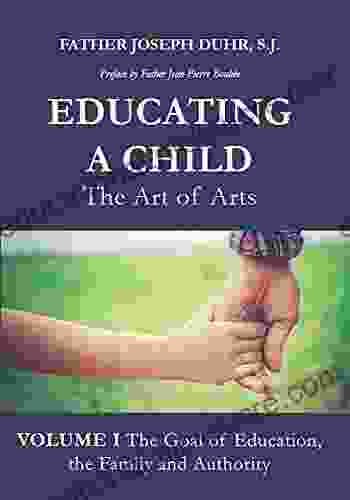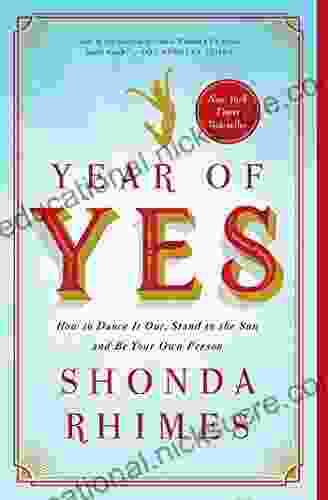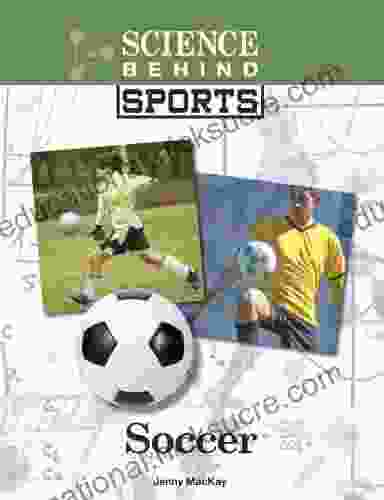The Art of Arts: An Exploration of the Intricacies of Artistic Expression

Art, in its vast and ever-evolving tapestry, has held an enduring fascination for humanity throughout history. From the earliest cave paintings to the cutting-edge contemporary installations, art has served as a mirror to our shared experiences, a vessel for self-expression, and a catalyst for cultural transformation.
4 out of 5
| Language | : | English |
| File size | : | 537 KB |
| Text-to-Speech | : | Enabled |
| Enhanced typesetting | : | Enabled |
| Word Wise | : | Enabled |
| Print length | : | 237 pages |
| Lending | : | Enabled |
| Screen Reader | : | Supported |
In this article, we embark on a journey to unravel the intricate world of art. We will explore the fundamental elements and principles that govern artistic creation, delve into the rich tapestry of art history, and uncover the nuances that distinguish different forms of artistic expression.
The Elements of Art: Building Blocks of Creation
The elements of art are the basic building blocks that artists use to create their works. These elements include:
- Line: A continuous mark made by a moving point, used to depict form, shape, and movement.
- Shape: A two-dimensional area enclosed by a line, used to represent objects, figures, and abstract forms.
- Form: A three-dimensional object, used to depict volume, mass, and weight.
- Color: The quality of light that reflects off an object, used to create mood, atmosphere, and visual interest.
- Texture: The surface quality of an object, used to evoke tactile sensations and create visual depth.
- Space: The area around, between, or within objects, used to create depth, perspective, and composition.
- Value: The lightness or darkness of a color, used to create contrast, shading, and modeling.
The Principles of Art: Guiding Principles of Expression
The principles of art are the guidelines that artists use to organize and unify their compositions. These principles include:
- Balance: The distribution of visual weight in a composition, used to create equilibrium and stability.
- Contrast: The difference between elements in a composition, used to create visual interest and emphasis.
- Emphasis: The focal point of a composition, used to draw the viewer's attention.
- Harmony: The pleasing arrangement of elements in a composition, used to create a sense of unity and cohesion.
- Movement: The suggestion of motion in a composition, used to create a sense of dynamism and energy.
- Pattern: The repetition of elements in a composition, used to create visual rhythm and unity.
- Proportion: The relationship between the size and scale of elements in a composition, used to create visual harmony and balance.
Art History: A Tapestry of Cultural Heritage
Art history is the study of the evolution of art over time and across cultures. It provides insights into the social, cultural, and historical contexts that have shaped artistic expression.
The history of art can be divided into several major periods:
- Prehistoric Art (c. 30,000 - 4,000 BCE): The earliest known forms of art, characterized by cave paintings and sculptures that depicted animals, humans, and symbolic imagery.
- Ancient Egyptian Art (c. 3100 - 30 BCE): An elaborate and highly stylized art form characterized by monumental architecture, sculptures, and hieroglyphics that reflected the religious and political beliefs of the time.
- Classical Greek Art (c. 500 - 323 BCE): An art form that emphasized balance, proportion, and ideal beauty, as seen in sculptures like the Venus de Milo and the Parthenon.
- Roman Art (c. 509 BCE - 476 CE): An art form that borrowed heavily from Greek influences but also incorporated elements of Etruscan and Eastern styles, as seen in architecture like the Colosseum and the Pantheon.
- Medieval Art (c. 5th - 15th century): An art form that was predominantly religious in nature, characterized by ornate architecture, stained glass windows, and illuminated manuscripts.
- Renaissance Art (c. 14th - 17th century): A revival of classical Greek and Roman art forms, characterized by a renewed emphasis on humanism, realism, and perspective, as seen in works by Leonardo da Vinci, Michelangelo, and Raphael.
- Baroque Art (c. 16th - 18th century): An art form characterized by dramatic, emotional intensity, and elaborate ornamentation, as seen in architecture like the Palace of Versailles and paintings by Caravaggio and Rubens.
- Neoclassicism (c. 18th - early 19th century): A return to the principles of classical Greek and Roman art, characterized by a focus on order, clarity, and ideal beauty, as seen in architecture like the White House and paintings by Jacques-Louis David.
- Romanticism (c. late 18th - mid 19th century): An art form that emphasized emotion, imagination, and the sublime, as seen in paintings by Caspar David Friedrich and J.M.W. Turner.
- Impressionism (c. mid 19th - early 20th century): An art form that focused on capturing the transient effects of light and atmosphere, as seen in paintings by Claude Monet and Pierre-Auguste Renoir.
- Modern Art (c. early 20th century - present): An umbrella term for a wide range of innovative art forms that broke away from traditional conventions, including Cubism, Expressionism, Surrealism, Pop Art, and Conceptual Art.
The Many Faces of Artistic Expression
Art encompasses a vast array of forms, each with its own unique characteristics and expressive potential.
- Painting: The application of pigments to a surface, used to create images and convey emotions.
- Sculpture: The creation of three-dimensional objects, used to depict human and animal forms, abstract concepts, and physical structures.
- Drawing: The creation of marks on a surface using a variety of tools, used for sketching, capturing ideas, and creating finished works.
- Photography: The capturing of images using a camera, used for documentation, artistic expression, and communication.
- Music: The creation of organized sounds, used for emotional expression, storytelling, and cultural rituals.
- Dance: The controlled movement of the body, used for artistic expression, storytelling, and physical fitness.
- Literature: The written or spoken word, used for storytelling, self-expression, and exploration of human experience.
- Architecture: The design and construction of buildings, used for shelter, functionality, and artistic expression.
The Essence of Creativity and Aesthetics
At the heart of art lies creativity, the ability to generate original ideas and produce new works.
Creativity is fueled by a combination of cognitive and emotional processes, including:
- Imagination: The ability to generate new images and ideas.
- Intuition: The ability to access subconscious thoughts and feelings.
- Problem-solving: The ability to find innovative solutions to artistic challenges.
- Expression: The ability to convey emotions, ideas, and experiences through artistic means.
Aesthetics, on the other hand, refers to the study of beauty and taste in art. It explores the factors that contribute to the aesthetic appeal of an artwork, including:
- Harmony: The pleasing arrangement of elements in a composition.
- Balance: The distribution of visual weight in a composition.
- Proportion: The relationship between the size and scale of elements in a
4 out of 5
| Language | : | English |
| File size | : | 537 KB |
| Text-to-Speech | : | Enabled |
| Enhanced typesetting | : | Enabled |
| Word Wise | : | Enabled |
| Print length | : | 237 pages |
| Lending | : | Enabled |
| Screen Reader | : | Supported |
Do you want to contribute by writing guest posts on this blog?
Please contact us and send us a resume of previous articles that you have written.
 Fiction
Fiction Non Fiction
Non Fiction Romance
Romance Mystery
Mystery Thriller
Thriller SciFi
SciFi Fantasy
Fantasy Horror
Horror Biography
Biography Selfhelp
Selfhelp Business
Business History
History Classics
Classics Poetry
Poetry Childrens
Childrens Young Adult
Young Adult Educational
Educational Cooking
Cooking Travel
Travel Lifestyle
Lifestyle Spirituality
Spirituality Health
Health Fitness
Fitness Technology
Technology Science
Science Arts
Arts Crafts
Crafts DIY
DIY Gardening
Gardening Petcare
Petcare Stephon Alexander
Stephon Alexander Kirk W Johnson
Kirk W Johnson Henry Fielding
Henry Fielding Andrew J Wakefield
Andrew J Wakefield Carla Killough Mcclafferty
Carla Killough Mcclafferty Andrew Heywood
Andrew Heywood Michaela Deprince
Michaela Deprince M J Abadie
M J Abadie Joey Rive
Joey Rive Jon Paschetto
Jon Paschetto J Richard Hackman
J Richard Hackman Gina M Biegel
Gina M Biegel Christopher O Shaughnessy
Christopher O Shaughnessy Monica Clyde
Monica Clyde Frances A Yates
Frances A Yates Andrew X Pham
Andrew X Pham Tanya Crossman
Tanya Crossman Laird Scranton
Laird Scranton Nick Estes
Nick Estes Yasuharu Okuda
Yasuharu Okuda David Sowell
David Sowell Rainer Martens
Rainer Martens Andrew Thompson
Andrew Thompson Neil Harman
Neil Harman Erika V Shearin Karres
Erika V Shearin Karres Dan Werb
Dan Werb Sharae Moore
Sharae Moore Rick Scoppe
Rick Scoppe Eli Maor
Eli Maor The Car Crash Detective
The Car Crash Detective John Eberhart
John Eberhart Timothy Gordon
Timothy Gordon Dennis J Stanford
Dennis J Stanford Philip Reeve
Philip Reeve Jill Squyres Groubert Phd
Jill Squyres Groubert Phd Margot Kahn
Margot Kahn Robert M Schoch
Robert M Schoch Charlie Jones
Charlie Jones Mary Sheedy Kurcinka
Mary Sheedy Kurcinka Marissa Meyer
Marissa Meyer Sean Bloomfield
Sean Bloomfield Jack David Eller
Jack David Eller Piero Ferrucci
Piero Ferrucci Vivien Newman
Vivien Newman Stephen Prata
Stephen Prata J K Rowling
J K Rowling Sheryl Feinstein
Sheryl Feinstein Mike Cohn
Mike Cohn Donn F Draeger
Donn F Draeger Tom Rosenbauer
Tom Rosenbauer Reid Sheftall M D
Reid Sheftall M D Delphi Classics
Delphi Classics Shonda Rhimes
Shonda Rhimes Mark Lester
Mark Lester Jakob Schwichtenberg
Jakob Schwichtenberg Beverly Asante Puschmann
Beverly Asante Puschmann Fatime Losonci
Fatime Losonci Rudy Rucker
Rudy Rucker Quick Guide
Quick Guide Howling Moon Books
Howling Moon Books Lisa Silverman
Lisa Silverman Carl Hart
Carl Hart Jerry M Gutlon
Jerry M Gutlon Daniel Mark Brown
Daniel Mark Brown Sam Fels
Sam Fels Ira J Chasnoff
Ira J Chasnoff Nancy Wainer Cohen
Nancy Wainer Cohen Tim Huffman
Tim Huffman Elizabeth Acevedo
Elizabeth Acevedo Mark Hyman
Mark Hyman Sam Maggs
Sam Maggs John Sefton
John Sefton Chaim Potok
Chaim Potok Rosicrucian Order Amorc
Rosicrucian Order Amorc Michael Barela
Michael Barela Educational Brain Games
Educational Brain Games Gordon W Green
Gordon W Green Chaz Scoggins
Chaz Scoggins Teresa Palmer
Teresa Palmer Ruth E Van Reken
Ruth E Van Reken Maggie Stiefvater
Maggie Stiefvater Thomas Clarkson
Thomas Clarkson Betty Smith
Betty Smith Richelle Mead
Richelle Mead Jonathan Bennett
Jonathan Bennett Larry Jacobson
Larry Jacobson Michelle Madow
Michelle Madow Joya Goffney
Joya Goffney Bruce H Lipton
Bruce H Lipton Sian Beilock
Sian Beilock Diane Tober
Diane Tober Dawn Isaac
Dawn Isaac Mark Mcclusky
Mark Mcclusky C Todd Lombardo
C Todd Lombardo Marsha Walker
Marsha Walker Roger Highfield
Roger Highfield Peter Compton
Peter Compton Slavka Bodic
Slavka Bodic Mark Vella
Mark Vella Mary H K Choi
Mary H K Choi Ginger Scott
Ginger Scott William E Hearn
William E Hearn Donna Tartt
Donna Tartt Monty Roberts
Monty Roberts Dora Kurimay
Dora Kurimay Maggie Ryan
Maggie Ryan W Somerset Maugham
W Somerset Maugham George W Hart
George W Hart Jeffro Johnson
Jeffro Johnson Stan Tekiela
Stan Tekiela Pawel Guziejko
Pawel Guziejko Gladstone Califf
Gladstone Califf Julia Cameron
Julia Cameron Helene St James
Helene St James Justine Bold
Justine Bold Andrew Peterson
Andrew Peterson Geraldine Woods
Geraldine Woods V S Ramachandran
V S Ramachandran Chris Dowhan
Chris Dowhan Touko Amekawa
Touko Amekawa Dan Anderson
Dan Anderson Elizabeth Walter
Elizabeth Walter Jordan Ellenberg
Jordan Ellenberg William Mark Huey
William Mark Huey Lucy Atkins
Lucy Atkins George Washington Cable
George Washington Cable Annette K Larsen
Annette K Larsen Gene Stone
Gene Stone Andrew Warnes
Andrew Warnes Stephen Cole
Stephen Cole Marcus Tomlinson
Marcus Tomlinson Brian L Silver
Brian L Silver Connie Goldsmith
Connie Goldsmith Ben Foss
Ben Foss Lynn Painter
Lynn Painter Liz Prince
Liz Prince Bridgit Danner Lac
Bridgit Danner Lac Palle Yourgrau
Palle Yourgrau Andrew Shaw
Andrew Shaw William Gurstelle
William Gurstelle Wendy Bryden
Wendy Bryden Andrew Phillip Smith
Andrew Phillip Smith Shannon Jensen
Shannon Jensen Daniel Tammet
Daniel Tammet Carson Mccullers
Carson Mccullers Hugh P Mckenna
Hugh P Mckenna Des Hewitt
Des Hewitt Jamie Christian Desplaces
Jamie Christian Desplaces Michael Epperson
Michael Epperson Chris Rodell
Chris Rodell Andrew Hudson
Andrew Hudson Gila Leiter
Gila Leiter Carla Hannaford
Carla Hannaford Nick Jaffe
Nick Jaffe Christine Pearson Casanave
Christine Pearson Casanave Mawi Asgedom
Mawi Asgedom Jared Benson
Jared Benson John Helyar
John Helyar David A French
David A French Uma Dinsmore Tuli
Uma Dinsmore Tuli Bryan Mellonie
Bryan Mellonie Carolyn Savage
Carolyn Savage Claire Phillips
Claire Phillips Nicholas Harvey
Nicholas Harvey Clare Keyes
Clare Keyes Carl Allchin
Carl Allchin Slow Sprint
Slow Sprint Jason William
Jason William Robert Kurson
Robert Kurson Lisa Roberts
Lisa Roberts Rolf Potts
Rolf Potts Peggy Orenstein
Peggy Orenstein Sol Adoni
Sol Adoni Lauren Kate
Lauren Kate Gordon Wright
Gordon Wright Nicholas J Higham
Nicholas J Higham K A Linde
K A Linde Behrouz Moemeni
Behrouz Moemeni Rob Eastaway
Rob Eastaway Robert Holdstock
Robert Holdstock Heidi Dais
Heidi Dais Laurie David
Laurie David Jonathan C Slaght
Jonathan C Slaght S G Taylor
S G Taylor Stephen Howe
Stephen Howe Michael F Roizen
Michael F Roizen William J Broad
William J Broad Sean B Carroll
Sean B Carroll Walter Martin
Walter Martin Ruta Sepetys
Ruta Sepetys Kuldeep Singh
Kuldeep Singh Susana Wald
Susana Wald Anthony Bishop Lmft
Anthony Bishop Lmft Jim Burnett
Jim Burnett John H Carroll
John H Carroll Joseph Bronson
Joseph Bronson Winifred Gallagher
Winifred Gallagher William Ma
William Ma Andrius Jac
Andrius Jac Elijah N Daniel
Elijah N Daniel Morten Lund
Morten Lund Shannon Brown
Shannon Brown Andrew Hempstead
Andrew Hempstead Lauren James
Lauren James Judith A Cohen
Judith A Cohen Peter Kaminsky
Peter Kaminsky Nelson L Schuman
Nelson L Schuman Robert Parris Moses
Robert Parris Moses Jessie Cal
Jessie Cal Omar D Lewis Sr
Omar D Lewis Sr Edmund Nequatewa
Edmund Nequatewa Carl Petersen
Carl Petersen Suzanne Van Atten
Suzanne Van Atten Tami Fox
Tami Fox Cary Hanson
Cary Hanson Pseudo Nym
Pseudo Nym Timothy Ferris
Timothy Ferris Rosalind Miles
Rosalind Miles Jen Benson
Jen Benson Becky Albertalli
Becky Albertalli Guy Windsor
Guy Windsor Simson L Garfinkel
Simson L Garfinkel Justine Bateman
Justine Bateman Kari Kampakis
Kari Kampakis Christine Moore
Christine Moore Cassandra Erkens
Cassandra Erkens Bronwen Skye
Bronwen Skye Erin Macpherson
Erin Macpherson Stephen Rea
Stephen Rea David Carrasco
David Carrasco Marie Sherlock
Marie Sherlock Lisa Bevere
Lisa Bevere Ricky Roberts Iii
Ricky Roberts Iii Samuel Hideo Yamashita
Samuel Hideo Yamashita Michael Polanyi
Michael Polanyi Jerry Z Muller
Jerry Z Muller Nigel Calder
Nigel Calder Andrew Moore
Andrew Moore Mona Liza Santos
Mona Liza Santos Joy Vines
Joy Vines Jason R Rich
Jason R Rich Guns Ammo
Guns Ammo Dawne Archer
Dawne Archer Andrew Reeves
Andrew Reeves J D Lenzen
J D Lenzen Brianne Donaldson
Brianne Donaldson Madeleine L Engle
Madeleine L Engle Jay Sokolovsky
Jay Sokolovsky Xan Barksdale
Xan Barksdale Peter D Jeans
Peter D Jeans Gordon Churchill
Gordon Churchill John Daido Loori
John Daido Loori Christopher Hodapp
Christopher Hodapp Rolf Dobelli
Rolf Dobelli Anne Marie Scully
Anne Marie Scully George H Odell
George H Odell Davida Hartman
Davida Hartman Andrew M Greeley
Andrew M Greeley Emilie Bailey
Emilie Bailey Jerusha Clark
Jerusha Clark Teresa M Twomey
Teresa M Twomey Andrew Robinson
Andrew Robinson Cathy Kelly
Cathy Kelly Tony Ray
Tony Ray Prosanta Chakrabarty
Prosanta Chakrabarty Robert N Wiedenmann
Robert N Wiedenmann Gabriel Weinberg
Gabriel Weinberg Dan Orr
Dan Orr Akil Palanisamy
Akil Palanisamy Steve Lage
Steve Lage Janis Abrahms Spring
Janis Abrahms Spring Andrew Stellman
Andrew Stellman Texes Exam Secrets Test Prep Team
Texes Exam Secrets Test Prep Team M L Ray
M L Ray Angela Berkfield
Angela Berkfield Sally Cook
Sally Cook Luna Fox
Luna Fox Lisa Cron
Lisa Cron Andrew Zerling
Andrew Zerling Adam Minter
Adam Minter Melisenda Edwards
Melisenda Edwards Kevin Anderson
Kevin Anderson Sally Bjornsen
Sally Bjornsen Rory Stewart
Rory Stewart Tom Bertrand
Tom Bertrand Edgar H Schein
Edgar H Schein Charles Darwin
Charles Darwin Andrew Lang
Andrew Lang Hp Newquist
Hp Newquist Sara T Gibbs
Sara T Gibbs Sarah Castille
Sarah Castille Rachel Lynn Solomon
Rachel Lynn Solomon James Berry
James Berry James D Watson
James D Watson Stephen James
Stephen James Nina Varela
Nina Varela Dustin Howe
Dustin Howe David Hawkins
David Hawkins Ashley Schmitt
Ashley Schmitt Michio Kaku
Michio Kaku Damon Wiseley
Damon Wiseley Andy Ankowski
Andy Ankowski Antonio Pigafetta
Antonio Pigafetta Seth J Gillihan Phd
Seth J Gillihan Phd E K Johnston
E K Johnston Helen O Neil
Helen O Neil Rhonda V Magee
Rhonda V Magee Chelsea Johnson
Chelsea Johnson Kinley Macgregor
Kinley Macgregor Bruno David
Bruno David Paul Davies
Paul Davies Judy Ford
Judy Ford John Mcphee
John Mcphee Linda Goldberg
Linda Goldberg Ed Rosenthal
Ed Rosenthal Tiffany Harelik
Tiffany Harelik Erwin Schrodinger
Erwin Schrodinger Kevin Thomas
Kevin Thomas Sebastian Deterding
Sebastian Deterding Sarah Edmondson
Sarah Edmondson Stacey Lee
Stacey Lee Alexander Bennett
Alexander Bennett David Stipp
David Stipp Tina H Boogren
Tina H Boogren Kris Holloway
Kris Holloway Paul Seabright
Paul Seabright Benedict Goleman
Benedict Goleman Sadhguru
Sadhguru Rita Jablonski
Rita Jablonski Mikael Krief
Mikael Krief Marianne Ryan
Marianne Ryan Chris Mcmullen
Chris Mcmullen Gary Todd
Gary Todd W Michael Kelley
W Michael Kelley Marian Stamp Dawkins
Marian Stamp Dawkins Bill Dance
Bill Dance Jennifer Lw Fink Rn Bsn
Jennifer Lw Fink Rn Bsn Michael J Thompson
Michael J Thompson Brock Lesnar
Brock Lesnar Andrew Lawler
Andrew Lawler J P Mcevoy
J P Mcevoy John Macgregor
John Macgregor Fred Rogers
Fred Rogers Emily Wibberley
Emily Wibberley Helene Henderson
Helene Henderson Glenn Berkenkamp
Glenn Berkenkamp Lauren Conrad
Lauren Conrad Thomas F Hornbein
Thomas F Hornbein Elianor M A
Elianor M A Arthur Kleinman
Arthur Kleinman Sarah Pinborough
Sarah Pinborough Gordon Webster
Gordon Webster Ronald T Kneusel
Ronald T Kneusel Sharon A Hansen
Sharon A Hansen Jaimal Yogis
Jaimal Yogis Damon B Akins
Damon B Akins Laird Hamilton
Laird Hamilton Ruth Haley Barton
Ruth Haley Barton Jenny Randles
Jenny Randles Michele Amitrani
Michele Amitrani Stephan Lee
Stephan Lee Sadie Robertson
Sadie Robertson Andrew Jamieson
Andrew Jamieson Aristeidis Bampakos
Aristeidis Bampakos Daniel D Fox
Daniel D Fox Andrew Hartman
Andrew Hartman Caroline Finnerty
Caroline Finnerty Clinton Anderson
Clinton Anderson Seabury Quinn
Seabury Quinn Rachel E Spector
Rachel E Spector Leslie Klenke
Leslie Klenke Eddy Starr Ancinas
Eddy Starr Ancinas Rupert Sheldrake
Rupert Sheldrake Christian Heath
Christian Heath Emily Kerr
Emily Kerr Justin Fox Burks
Justin Fox Burks Natalie Babbitt
Natalie Babbitt John R Anderson
John R Anderson Diane R Gehart
Diane R Gehart Stephanie V W Lucianovic
Stephanie V W Lucianovic Mirabai Starr
Mirabai Starr Rosita Boland
Rosita Boland Kathleen Huggins
Kathleen Huggins David Jefferson
David Jefferson Tim Clarkson
Tim Clarkson Fourth Edition Kindle Edition
Fourth Edition Kindle Edition Tom Holland
Tom Holland Sabrina Chevannes
Sabrina Chevannes Dave Chambers
Dave Chambers Jon Gertner
Jon Gertner Lawrence Dawson
Lawrence Dawson Richard G Klein
Richard G Klein Julie Lythcott Haims
Julie Lythcott Haims Jennie Lynn Gillham
Jennie Lynn Gillham Zhongxian Wu
Zhongxian Wu Ernest Becker
Ernest Becker Stanley L Jaki
Stanley L Jaki Atul K Mehra
Atul K Mehra Kirk Goldsberry
Kirk Goldsberry T H Lain
T H Lain Andy Burnham
Andy Burnham John Atherton
John Atherton Debbie Felkins Tamez
Debbie Felkins Tamez Carolyn Coker Ross
Carolyn Coker Ross Vincent Norman
Vincent Norman Richard Twiss
Richard Twiss Jim Flynn
Jim Flynn Mark Cannizzaro
Mark Cannizzaro N S Wikarski
N S Wikarski P Anastasia
P Anastasia Samara Caughey
Samara Caughey Charles Cooper
Charles Cooper Dr Sarah Mitchell
Dr Sarah Mitchell Harvey Motulsky
Harvey Motulsky Vibrant Publishers
Vibrant Publishers Kevin Shea
Kevin Shea Martin Woodward
Martin Woodward Brian Grossenbacher
Brian Grossenbacher Rachel Pepper
Rachel Pepper Patrick Felicia
Patrick Felicia Tom Chesshyre
Tom Chesshyre Shari Mezrah
Shari Mezrah Rhianna Pratchett
Rhianna Pratchett Andrew Hodges
Andrew Hodges Loris Chen
Loris Chen Michael J Mauboussin
Michael J Mauboussin K L Walther
K L Walther Andy Crouch
Andy Crouch James R Hansen
James R Hansen Richard Bullivant
Richard Bullivant Edward C Klatt
Edward C Klatt Ron Hackett
Ron Hackett Leigh Bernacchi
Leigh Bernacchi Hope Jahren
Hope Jahren Mallory Striesfeld Ms Lpc
Mallory Striesfeld Ms Lpc Briana Wiles
Briana Wiles Christopher Dunn
Christopher Dunn Garth Nix
Garth Nix Mike Wells
Mike Wells Ruth Bell Graham
Ruth Bell Graham Luca Brambilla
Luca Brambilla Linda Whitenton
Linda Whitenton Dr John Hockey
Dr John Hockey Melanie Burnell
Melanie Burnell Master Wong
Master Wong Nancy Frey
Nancy Frey Mark Needham
Mark Needham Andrew H Knoll
Andrew H Knoll Howard Thurman
Howard Thurman Bryan Sykes
Bryan Sykes Dan Allan
Dan Allan Ross Bernstein
Ross Bernstein Molly E Lee
Molly E Lee Nicholas D Souza
Nicholas D Souza Madeleine Roux
Madeleine Roux Jonathan Scott
Jonathan Scott Nadia Shammas
Nadia Shammas Andrew Nahum
Andrew Nahum Mark Vanhoenacker
Mark Vanhoenacker John Lofty Wiseman
John Lofty Wiseman Melody Groves
Melody Groves Jennifer M Rosner
Jennifer M Rosner Claiborne Young
Claiborne Young Kent Nerburn
Kent Nerburn Xavier P Hunter
Xavier P Hunter Daniel W Cunningham
Daniel W Cunningham Fiona Higgins
Fiona Higgins James P Sethna
James P Sethna Ilene And Gary Modica
Ilene And Gary Modica Antipodean Writer
Antipodean Writer Kay Pranis
Kay Pranis Shannon Van Den Berg
Shannon Van Den Berg Vanessa A P
Vanessa A P Ehsan Masood
Ehsan Masood Sue Fleming
Sue Fleming Aaron Edkins
Aaron Edkins Tom Doak
Tom Doak Christine Carter
Christine Carter Eva Longoria
Eva Longoria Sarah Digregorio
Sarah Digregorio Marcos Romero
Marcos Romero Rami Ungar
Rami Ungar Kathrine Switzer
Kathrine Switzer Bob Brier
Bob Brier Claire Ahn
Claire Ahn Jamie Thornton
Jamie Thornton Portia Macintosh
Portia Macintosh Eric H Cline
Eric H Cline Carolyn S Schroeder
Carolyn S Schroeder Catherine Gildiner
Catherine Gildiner Bill Pennington
Bill Pennington L Kathleen Mahan
L Kathleen Mahan Jessica Speer
Jessica Speer Jim Hardy
Jim Hardy Jay Arthur
Jay Arthur Christopher Vaughan
Christopher Vaughan Zita Grant
Zita Grant Miles Smeeton
Miles Smeeton Jennie Erin Smith
Jennie Erin Smith Sendhil Mullainathan
Sendhil Mullainathan Patrick Barrett
Patrick Barrett H A Lorentz
H A Lorentz
Light bulbAdvertise smarter! Our strategic ad space ensures maximum exposure. Reserve your spot today!

 Jared NelsonMeet Me Under the Northern Lights: A Guide to Witnessing Nature's Celestial...
Jared NelsonMeet Me Under the Northern Lights: A Guide to Witnessing Nature's Celestial...
 Jonathan FranzenHow To Be Really Pretty Even If You Don't Think You Are: A Comprehensive...
Jonathan FranzenHow To Be Really Pretty Even If You Don't Think You Are: A Comprehensive...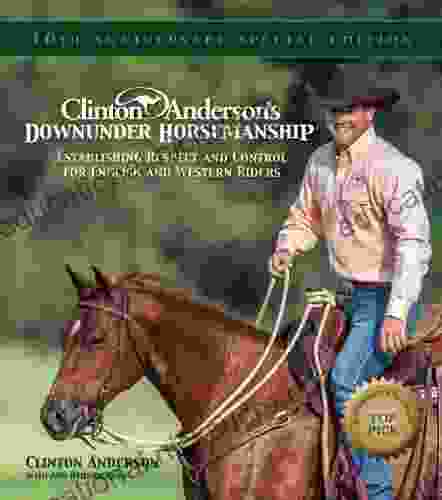
 Boris PasternakClinton Anderson S Downunder Horsemanship: Establishing Respect And Control...
Boris PasternakClinton Anderson S Downunder Horsemanship: Establishing Respect And Control... Steve CarterFollow ·19.7k
Steve CarterFollow ·19.7k Cody BlairFollow ·2.7k
Cody BlairFollow ·2.7k Doug PriceFollow ·15k
Doug PriceFollow ·15k Gil TurnerFollow ·14.1k
Gil TurnerFollow ·14.1k Willie BlairFollow ·15.7k
Willie BlairFollow ·15.7k Hunter MitchellFollow ·18.4k
Hunter MitchellFollow ·18.4k Federico García LorcaFollow ·14.2k
Federico García LorcaFollow ·14.2k James GrayFollow ·15k
James GrayFollow ·15k
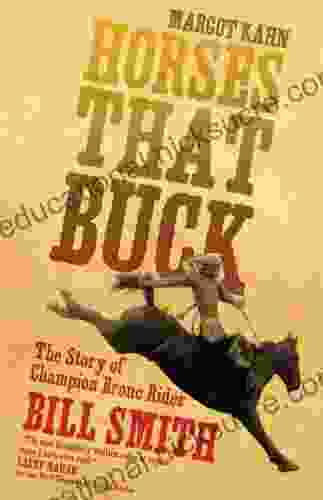
 Craig Blair
Craig BlairThe Story of Champion Bronc Rider Bill Smith: A Legacy of...
In the annals of rodeo...

 H.G. Wells
H.G. WellsAmazing Real Life Stories In The News
The news is often...
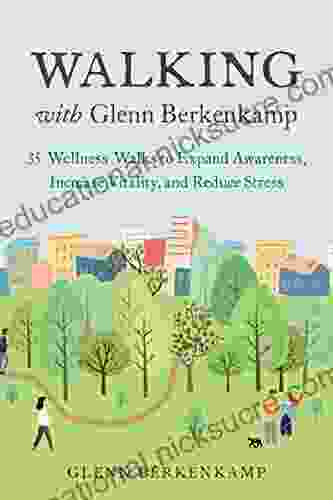
 Jordan Blair
Jordan Blair35 Wellness Walks to Expand Awareness, Increase Vitality,...
In an era where technology...
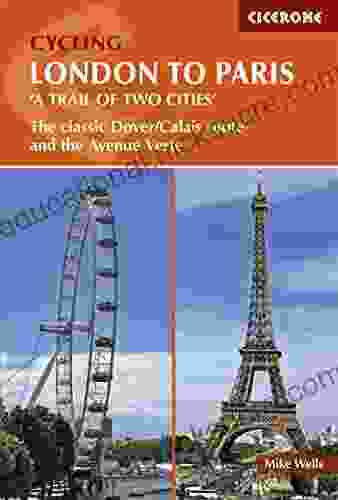
 Edward Reed
Edward ReedCycling London to Paris: An Epic Adventure in the Making
Are you ready for the...
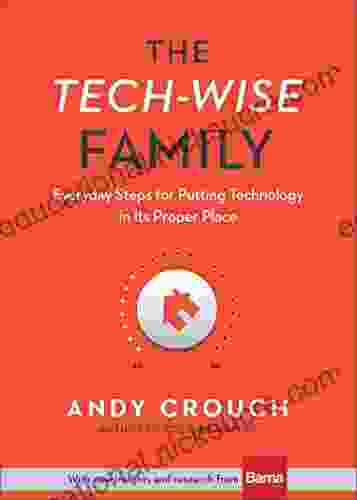
 Edgar Hayes
Edgar HayesEveryday Steps For Putting Technology In Its Proper Place
Are you constantly...
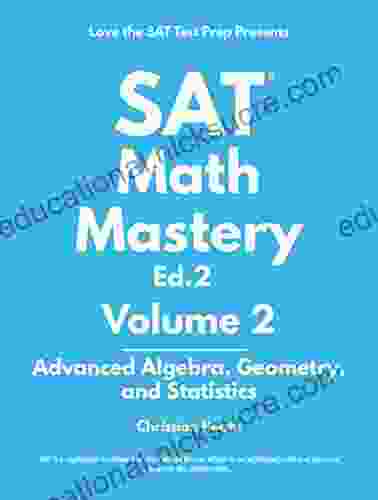
 Mitch Foster
Mitch FosterSat Math Mastery Advanced Algebra Geometry And Statistics
SAT Math Mastery Advanced Algebra Geometry...
4 out of 5
| Language | : | English |
| File size | : | 537 KB |
| Text-to-Speech | : | Enabled |
| Enhanced typesetting | : | Enabled |
| Word Wise | : | Enabled |
| Print length | : | 237 pages |
| Lending | : | Enabled |
| Screen Reader | : | Supported |


